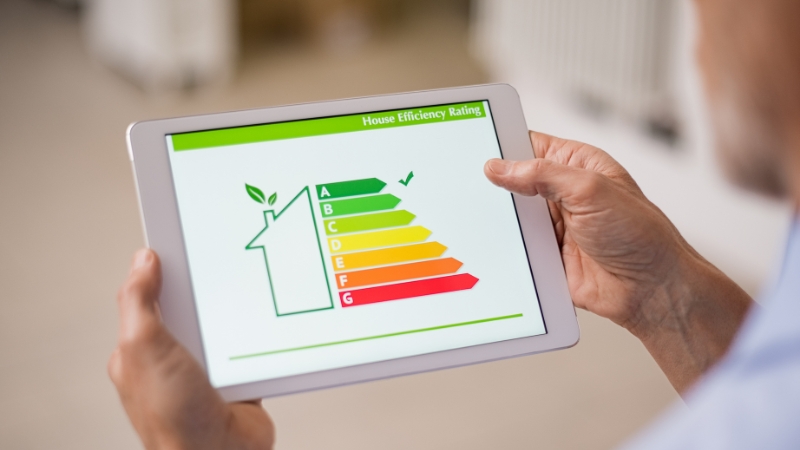According to the latest HMRC data, property transactions are finally where they were before lockdown halved the number of house sales.
- The provisional seasonally adjusted estimate of UK residential transactions in October 2020 is 105,630, 8.1% higher than October 2019 and 9.8% higher than September 2020;
- The provisional non-seasonally adjusted estimate of UK residential transactions in October 2020 is 121,740, 13.7% higher than October 2019 and 23.7% higher than September 2020;
- the provisional non-seasonally adjusted estimate of UK non-residential transactions in October 2020 is 9,840, 6.1% lower than October 2019 and 12.8% higher than September 2020.
Director of Benham and Reeves, Marc von Grundherr, said: “There’s no doubt that the reopening of the property market and the stamp duty holiday caused a huge influx on buyer demand.
“However, it’s only really now that this demand is starting to translate into a full return to health where actual transactions are concerned.
“This is, of course, due to the lagged nature of the property selling process and so this positive health report is really just the start of what should be a steep increase in transaction volumes over the coming months.”
According to Managing Director of Enness Global Mortgages, Hugh Wade-Jones, demand is now so high that the system us under strain. He said: “The property market is continuing to build momentum at a rapid pace and this is despite efforts by some lenders to stifle this market activity by reducing their range of products for first-time buyers, in particular, over the last few months.
“There has been such an overwhelming demand in recent months that the industry has struggled to keep pace and as a result, backlogs have formed with many left in limbo as they wait for their sale to complete.
“However, as the industry works to shift this backlog it does mean a consistently high level of transactions will be seen over the coming months. It’s taken just six months for the market to recover from pandemic induced paralysis and we expect to see transactions continue to climb for many months to come.”
Mike Scott, Chief Analyst at Yopa, said that it was likely that the volume of sales will remain high as the results of the stamp duty holiday come to fruition.
He said: “These figures will still largely relate to sales that were agreed before the stamp duty holiday was announced in early July, and so we can expect further increases over the coming months as the additional sales resulting from the temporary holiday complete the sales process. However, there isn’t time for the market to fully catch up to where it would have been without the pandemic. The years from 2014 to 2019 all saw around 1.2 million homes sold, but the total for the first ten months of 2020 is just under 800,000. Even a strong showing for the last two months won’t take the total for the year much over a million sales.”
However, Anna Clare Harper, CEO of asset manager SPI Capital, said it’s hard to predict how buyers will behave in the long term. “In April and May, under strict lockdown, transactions were down by about 50% compared with the same time the previous year,” she said. “Transactions are now being encouraged by the temporary stamp duty reduction, the release of pent-up demand and supply, and the desire to improve surroundings following lockdown.
By contrast, non-residential transactions have remained subdued – as owners and buyers struggle to come to grips with the ‘new normal’. What is clear from the residential transactions data is that the fundamental drivers of value in residential property remain strong: our homes have never been so important as in lockdown.
“So what next? What we know for sure is that this will be driven by a combination of macroeconomic factors and policy changes, neither of which are predictable in these uncertain, fast-changing times.”
The discovery of three potential vaccines is also likely to boost the market. Jeremy Leaf, north London estate agent and a former RICS residential chairman, said: “Transactions are always a more reliable indicator of market strength than volatile house prices and these figures confirm what we have been seeing lately – further restrictions in activity resulting in a buying and selling pause.
“But the prospect of an end to the pandemic has been a shot in the arm for the market, resulting in buyers trying to take advantage of the stamp duty holiday and make sure their move completes before the end of next March. Looking forward, we don’t expect too much of a change and many of the buyers who may lose out on the stamp duty discount because they don’t complete in time have already told us they intend to try to renegotiate and share the saving with their sellers.”
Andrew Southern, Chairman of property developer Southern Grove, thinks the pandemic may even have been a blessing in disguise. He said: “Covid-19 has blown the lid off the housing market. After years in the doldrums, coronavirus has unexpectedly provided the rude awakening the market needed to launch its great escape. The pandemic and a raft of measures to support the economy have delivered record house prices and, finally, a head-turning recovery in sales volumes.
“There haven’t been more transactions than this in a single month since March 2016, and even that was a very unusual spike created by tax changes for landlords. This pandemic milestone is very much against the run of play, and mirrors the outperformance of the housing market compared with other sectors. It’s also the first time since the coronavirus erupted that residential sales volumes have grown on an annual basis, and that’s fantastic news.
“It reinforces the strength of the housing market, which gives developers the confidence to keep growing and building. It also provides a confidence boost to prospective homeowners who, in the face of an onslaught of negative news and the prospect that the end of the stamp duty holiday in March could soften prices, want to feel they aren’t jumping in with both feet just at the wrong moment.
“The reality is that the UK market has always shown strength in value over the medium term. The optimistic amongst us will be hoping this healthy upward trend will continue to the long forgotten highs that were considered perfectly normal prior to the Global Financial Crisis.”
Lee Pickett, a real estate partner at global legal business, DWF, comments on the latest figures. He said: “The HMRC data for October on property transactions completed in the UK with value of £40,000 or above shows that the residential market is exhibiting strong signs of growth at a time when other parts of the economy are not in such good health.
“The October figures follow an upward trend, with 105,630 residential property transactions. The stamp duty holiday – which is in place until next March – is encouraging homeowners who may have otherwise battened down the hatches to return to the market in large numbers to sell their property and move along the housing ladder.
“This simulated boost to the residential market is having the desired effect of creating volume in the market, but it could also be argued that it is swelling prices too, with average UK house prices now around eight times more than the average UK salary. Mortgage rates are at an all-time low, but that, coupled with the stamp duty holiday, is still not enough for many who want to get a foot on the housing ladder.”




